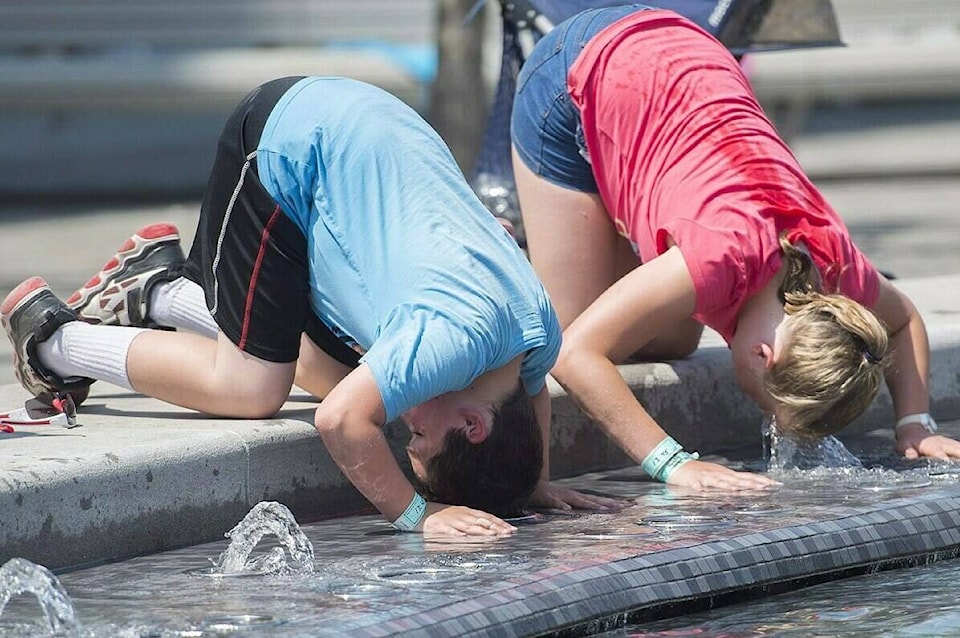With warmer than normal temperatures forecast across Canada this summer, B.C.'s ambulance service is asking British Columbians to think about how they can prepare for extreme heat.
B.C. Emergency Health Services says it has started releasing a series of informational videos over social media to let people know about the risks heat poses and how they can keep themselves and others safe.
Public information officers Brian Twaites and Rachelle Bown will be guiding people on how to blockout their windows, create their own affordable air-conditioning units and freeze wet towels inside plastic bags, to be placed around a person's neck or under their armpits.
Twaites said they are also encouraging people to consider purchasing an air conditioner or fan now before the heat hits and supplies sell out. Opening multiple windows for ventilation is another good option, Twaites said, but he warned that people with young kids should always check that they won't be able to accidentally fall out.
People should make a heat wave plan too. If they don't have air conditioning, Twaites and Bown said people should think about if they have a friend or family member they could stay with, or if there are public spaces like libraries or shopping malls nearby that they could spend some of their day in.
And, the two hope people don't just think about their loved ones, either. During the 2021 heat dome, more than half of the 619 deaths were among people who lived alone, according to the BC Coroners Service. Death rates were also especially high among elderly people, people with mental illnesses and people living in poorer neighbourhoods.
“We're looking for family, friends and community to think about these people that are in these high risk groups. And to look after not only your family, but your neighbours as well," Twaites said.
Another major finding from the 2021 heat dome review was that 98 per cent of deaths occurred indoors. Both Twaites and Bown emphasized this point. They noted that even when temperatures are only in the high 20s or low 30s outside, it can be far hotter and far more dangerous inside.
Bown said people should watch out for symptoms of heat illness and call 811 to speak with a nurse if they start displaying signs of being unwell. Symptoms of mild heat illness include weakness, headache, nausea, thirst, dry mouth and fatigue. As it gets more severe, people may experience severe nausea and vomiting, loss of consciousness, severe lethargy and hot, red skin.
If a person's symptoms are becoming more severe, Bown said they should call 911.
Heat waves are predicted to become more and more common in B.C. as climate change progresses. A report from World Weather Attribution in the wake of the 2021 heat dome determined that similar events under current climate conditions will happen about once every thousand years. If the world continues to warm, however, those kinds of serious heat events could begin occurring about every five to 10 years.
In 2022, B.C. launched a new heat alert system that allows it to issue broadcast intrusive alerts in the case of heat emergencies. During lesser heat events, the province can also issue regular warnings.



